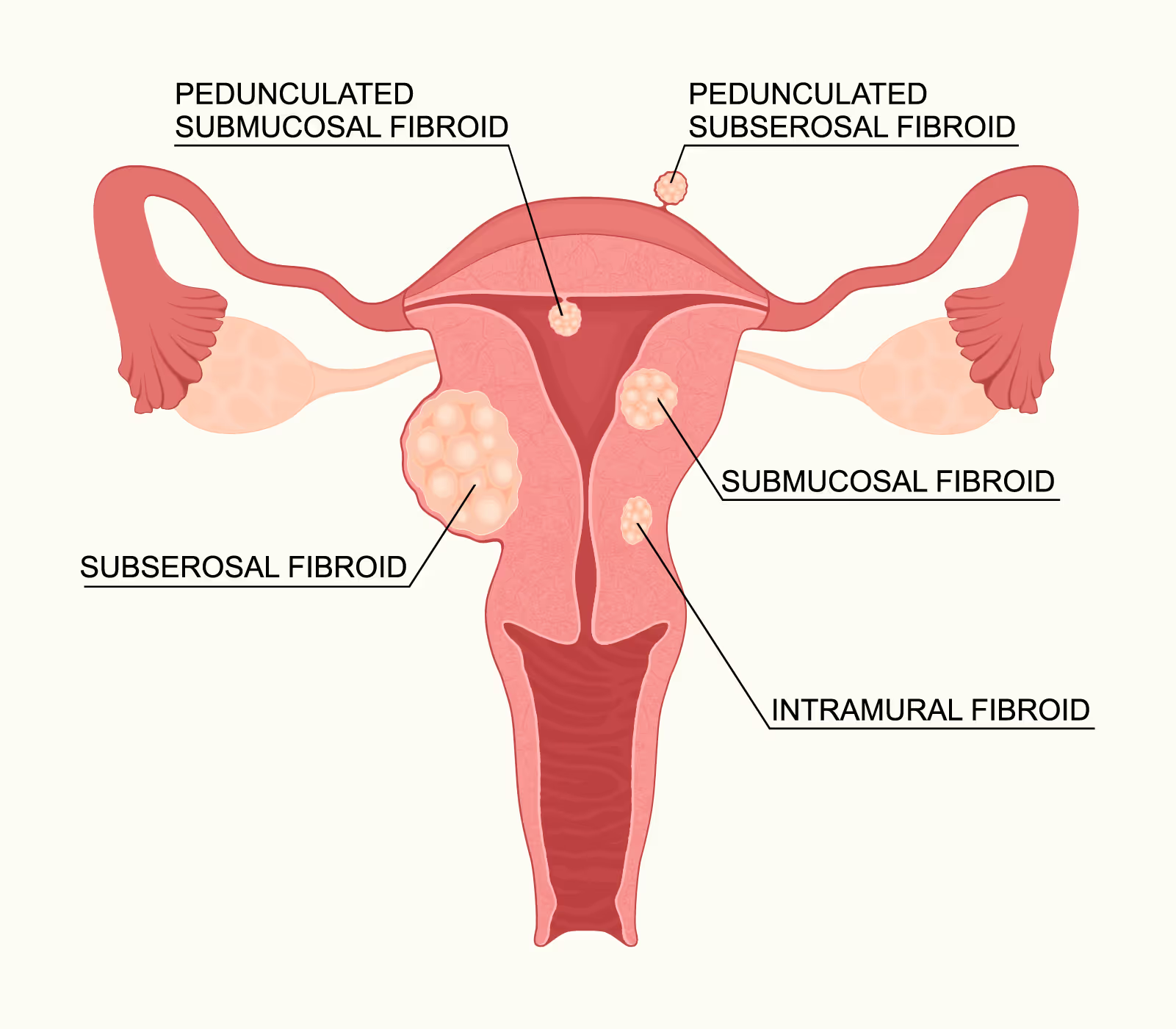Chronic Pelvic Pain

Chronic Pelvic Pain
Finding Answers When "Everything Looks Normal"
Chronic Pelvic Pain is defined as persistent or recurring pain in the area below your belly button that lasts for at least six months. The cause is often multifactorial and can be a complex interplay between your reproductive organs, bladder, bowel, muscles, and even the nerves themselves.
Gynecologic Causes (Most Common):
- Endometriosis: The leading cause of CPP, where uterine-like tissue grows outside the uterus, causing inflammation and scarring.
- Adenomyosis: When the uterine lining grows into the muscular wall of the uterus, causing a bulky, painful uterus.
- Fibroids: Non-cancerous growths that can cause pressure and pain.
- Pelvic Adhesions: Bands of scar tissue that can form after surgery, infection, or due to endometriosis, binding organs together.
- Pelvic Inflammatory Disease: Chronic inflammation from a past infection.
Other Potential Sources:
- Bladder: Conditions like Interstitial Cystitis (Painful Bladder Syndrome).
- Bowel: Irritable Bowel Syndrome (IBS) and other gastrointestinal issues.
- Musculoskeletal: Tension in the pelvic floor muscles, trigger points, or hip/back problems.
- Neurologic: Nerve entrapment or sensitization, where the nervous system becomes over-reactive and sends amplified pain signals (a condition called "central sensitization").
Common Symptoms
The experience of CPP is unique to each person:
- A constant, dull ache or a feeling of heavy pressure
- Sharp, stabbing, or cramping pains that come and go
- Pain during or after sexual intercourse (dyspareunia)
- Pain with urination or bowel movements
- Pain that worsens with your period, with ovulation, or after sitting for long periods
How Chronic Pelvic Pain Affects Daily Life
- Mental & Emotional Health: strongly linked to depression, anxiety, and feelings of hopelessness.
- Sleep & Energy: disrupts sleep, leading to persistent fatigue.
- Work & Productivity: difficulty concentrating and missed workdays are common.
- Relationships & Intimacy: can strain relationships with partners and lead to avoidance of intimacy.
- Quality of Life: can limit your ability to exercise, socialize, and enjoy daily activities
Your pain is real, it is not "in your head," and it deserves a thorough and compassionate investigation.
The Path to Diagnosis
- Detailed Patient History: The most important step is a deep conversation about your pain is to make note of where it is, what it feels like, and what makes it better or worse.
- Specialized Physical Exam: A gentle, targeted exam helps identify specific areas of tenderness.
- Advanced Imaging: A high-quality transvaginal ultrasound or pelvic MRI can help identify structural causes like endometriomas, adenomyosis, or fibroids.
- Diagnostic Laparoscopy: This is the gold standard for diagnosing and treating many causes of CPP. This minimally invasive surgery allows Dr. Kim to directly visualize the pelvic organs to definitively identify endometriosis, adhesions, or other abnormalities that imaging cannot see.
Treatment Options
Medical and rehabilitative care
- Hormone therapy to calm hormonally driven pain
- Pain medications
- Pelvic floor physical therapy to relax and retrain tight or overactive muscles
- Bladder or bowel care when those systems contribute
Surgical care (MIGS) when appropriate
- Laparoscopic excision of endometriosis
- Lysis of adhesions (carefully releasing scar tissue)
- Myomectomy for fibroids if they contribute to pain
- Hysterectomy for select cases when other treatments fail and preserving the uterus is not a goal
Questions to Ask Dr. Kim During Your Visit
- Based on my symptoms, what are the most likely causes of my pain?
- What is your approach to diagnosing a complex issue like pelvic pain?
- Could my pain be coming from more than one source?
- Would I be a good candidate for diagnostic laparoscopy?
- What role could pelvic floor physical therapy play in my treatment?
Why Choose Us?
- You’ll work exclusively with Dr. Kim throughout your journey
- Direct call/text access to Dr. Kim
- We provide expert care for women dealing with chronic pelvic pain and its complex causes.
- We believe in a comprehensive diagnostic approach to uncover the true source of your symptoms.
- We perform advanced laparoscopic surgery to both diagnose and treat conditions like endometriosis and adhesions in a single procedure.
Chronic pelvic pain is a real and treatable medical condition. You do not have to live with it, and you should not be dismissed. The key is working with a specialist who will act as your partner, listen to your story, and commit to a comprehensive investigation to find the root cause of your pain and develop a personalized plan to help you get your life back. Contact us today to learn more about chronic pelvic pain care and arrange a visit to our Park Ave office based in the Upper East Side, New York City.



